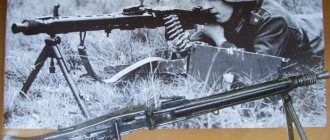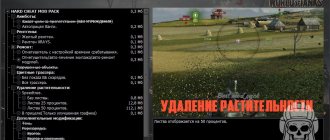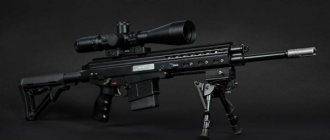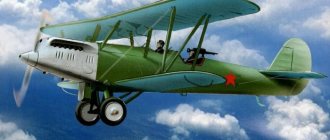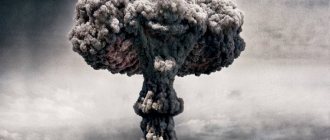Self-propelled artillery in its design is in many ways reminiscent of a tank. With less maneuverability and armor, it has high firepower. Such installations are most effective in supporting advances by tank and infantry formations.
Self-propelled artillery mounts (self-propelled guns) began to be used already in the First World War. Gradually they occupied their niche in the field of combat use and were actively used in the Second World War. Given their combat qualities, self-propelled guns are practically not used outside large-scale conflicts.
Self-propelled gun "Ferdinand" (Ferdinand) - heavy anti-tank (AT) artillery unit of the Third Reich during the Second World War. It was created with a focus on destroying enemy tanks and was used primarily on the Eastern Front.
Development history
Self-propelled gun "Ferdinand"
The history of the creation of the self-propelled gun Ferdinand is associated with the design of the Tiger I tank. Development was carried out by competing companies Porsche and Henschel, presenting prototypes VK 4501 (P) and (H) in 1942, respectively. Hitler proposed assembling both vehicles in parallel, but at a meeting with the Armaments Directorate it was decided to leave the Henschel option.
Ferdinand Porsche's tank model had transmission problems and a short range. At the same time, the production of engines required a large amount of non-ferrous metals, which were in short supply in Germany. However, Porsche did not wait for the results of the meetings and began assembling the first tanks.
Porsche cars were never accepted into service. In the fall of 1942, Hitler ordered the use of their chassis for a heavy assault self-propelled gun with an 88-mm Pak 43 cannon and 200-mm armor. These conditions required significant changes in the layout of the machine.
Maybach engines that were already in mass production were also installed on the new German self-propelled gun. This required redesigning the cooling system and fuel tanks. All work was done in great haste, which subsequently caused a number of shortcomings.
By the end of December 1942, new self-propelled guns were presented for testing. As a reward, Hitler gave them the name of the designer "Ferdinand". In the spring of 1943, artillery installations began to arrive at the front.
At the end of 1943, the installations remaining after the first battles were returned to Germany for modernization. A forward-facing machine gun appeared in the frontal area, the guns were replaced, and a commander's cupola with seven periscope devices appeared. These aspects make it easy to distinguish self-propelled gun versions from photos.
The vulnerability of the installations to mines was also taken into account - the front part of the bottom received additional armor, the tracks became wider. The new model was called “Elephant” (Elephant, from German “elephant”, sometimes written Elefant), but this name was fixed only in English-language literature, since it was the modernized version that the Allies encountered after the opening of the second front.
Tiger from Porsche
In 1941, Porsche provided Hitler with a drawing of his new Tiger tank, and the vehicle was immediately put into development. It was supposed to be a heavy tank weighing 45 tons with a turret and two engines. The tank was built by the Austrian plant Nibelungenwerk, and already in April 1942 it passed its first tests at the Kummersdorf training ground. The tests were led by Hitler personally.
In these tests, the Tiger competed with the Henschel VK 45.01 (H) tank, and the latter proved to be better than the Tiger, despite the fact that high hopes were initially placed on the Porsche car.
Breakdowns of the Tiger during test runs led to the project being canceled in favor of a more promising competitor. However, the Germans were so confident that the Tiger would go into mass production that while the tests were underway, the plant had already produced a hundred tracked chassis for it. Since the project was cancelled, this became a problem. The Tiger's tracked chassis did not fit any of the German tanks being designed. Then Porsche was tasked with developing a new tank for these tracks in order to put them into use.
User manual
The application manual initially put the Ferdinand self-propelled guns at a disadvantage. Their limited range and low maneuverability limited their use in mass offensives, although they could be used in positional battles. Also, the heavy weight of the installation did not allow it to cross most bridges.
Self-propelled artillery "Ferdinand" (the simplified name "Ferd" is incorrect) was designed to destroy Soviet tanks. Considerable armor provided reliable protection against their projectiles. It was supposed to use self-propelled guns as the first echelon of attack on Soviet positions due to the armor.
Combat vehicle design
Schematic representation of an artillery installation
The design of the Ferdinand self-propelled gun was largely redone after it was decided to turn the tank into artillery. Due to the considerable length of the gun, the turret was moved to the rear, where the main crew cabin was also located.
The power plant with engines, generators, cooling and fuel tanks is moved to the middle part; it is separated from the control compartment by heat-resistant partitions. Given the location of the departments, there was no direct communication between the control and the control room.
Despite the absence of a machine gun, there were loopholes in the wheelhouse for firing from personal weapons. They are represented by small hatches with plugs, three in the stern and one on each side. There was also a door in the stern through which the crew could leave the installation. On the roof of the cabin there were additionally two hatches for the crew, small hatches for installing a periscope and a fan.
Surveillance and communications equipment
Surveillance of the area was carried out using periscope devices provided in the control compartment and in the wheelhouse. There were also inspection slots for the driver and radio operator in the front beveled side panels.
The self-propelled guns were equipped with a FuG 5 radio station mounted in the control department. Her telephone worked within a radius of 6.5 km, her telegraph - 9.5 km. The commanders' vehicles were equipped with more powerful FuG 8s with an additional antenna.
Armored Corps
Self-propelled guns "Ferdinand" were lined with rolled hardened armor. The frontal protection had a thickness of 200 mm, the upper part of the hull, sides and stern - 80 mm, the lower part of the side - 60 mm. The bottom had 20 mm armor, but the front part (1.35 m) was additionally reinforced with a 30 mm sheet. All fastenings were provided with bolts with bulletproof heads.
Crew
The crew of the artillery installation consisted of 6 people. The driver and radio operator were located in the control department. The main crew, including the commander, is in the control room. With the advent of the machine gun, the radio operator also served as a gunner.
Armament
Artillery self-propelled gun with crew
The armament of the Ferdinand self-propelled gun was initially designed to counter tanks and other armored vehicles. The weapon hit almost any vehicle. Only the IS-2 and M26 Pershing at a certain distance from the required heading angle could withstand a projectile hit.
88 mm StuK 43 gun
The key armament of the self-propelled artillery unit is an 88-mm Pak 43/2 rifled gun with a barrel length of 71 calibers. Its outdated designation is StuK 43. Version 43/2 is a tank variant of the Pak 43.
The weight of the gun is 2.2 tons; in the stowed position it was mounted on a special installation. It had two recoil devices and a vertical wedge bolt that operated semi-automatically. The guidance mechanisms were located on the left at the gunner's position. For this purpose, a periscope device SFlZF1a/Rblf 36 with a fivefold magnification was used.
The ballistics of the gun allowed it to penetrate 132 mm of armor at a meeting angle of 60 degrees at a distance of 2 km. From 100 meters under the same conditions, 202 mm of armor was penetrated. The ammunition consisted of 50 shells - armor-piercing tracer Pzgr.39-1, sub-caliber Pzgr.40/43 and high-explosive fragmentation Sprgr 43. The modified "Elephant" ammunition was increased to 55 shells.
1x7.92 mm machine gun
The original version of the Ferdinand self-propelled gun did not have a machine gun. In the modified version of January-March 1944, the MG-34 ball mount of 7.92 mm caliber appeared. It was located on the right side of the frontal part. Ammunition - 600 rounds.
Photo self-propelled gun Ferdinand (Elephant)
The Ferdinand heavy assault gun, destroyed by a direct hit from an aerial bomb from a Soviet Pe-2 dive bomber. Tactical number unknown. Area of Ponyri station and state farm “May 1”.
German heavy assault gun "Ferdinand" of the 653rd battalion (division), captured in good condition along with its crew by soldiers of the Soviet 129th Oryol Rifle Division. The left front corner of the self-propelled gun was hit by a HE shell (“chrysanthemum” is clearly visible in the photo). That’s why there is no fender or wing. But the self-propelled gun itself was fully operational, the gun and instruments were in perfect order, the radio station was working. Even Fedya’s magical “little book” was available.
German self-propelled gun "Ferdinand", which failed on a wooden bridge near Nikopol (Dnepropetrovsk region, Ukraine).
The set fire to the German self-propelled gun "Ferdinand" is on fire. Kursk Bulge region.
German self-propelled gun "Ferdinand" from the 653rd battalion, destroyed by an internal explosion. Kursk Bulge, defense zone of the 70th Army, summer 1943.
Similar
SAU 2S7 Pion (2S7M Malka) performance characteristics.
Caliber. Dimensions. Firing range of MLRS BM-21 Grad. Damage area. Rockets. Caliber. Story
120-mm mortar 2B11 complex 2S12 Sani TTX. Firing range. Weight
Mortar 2B9M Vasilek 82 mm Rate of fire. Firing range. Weight
Self-propelled gun 2S3 Akatsiya 152 mm. Firing range. Dimensions. Weight. Engine
SAU 2S1 Gvozdika 122 mm Firing range. Dimensions. Device. Weight
Gun 2A36 Giatsint-B 152 mm. Firing range. Dimensions. Device
MLRS 9K58 Smerch Damage area. Rockets. Caliber. Story
MT-12 Rapier gun. Firing range. Story. Dimensions
Howitzer D-30 122-mm performance characteristics. Firing range. Dimensions. Weight
2S4 Tulip self-propelled mortar 240 mm performance characteristics. Dimensions. Firing range. Weight
Self-propelled gun 2S35 Koalitsiya-SV 152-mm performance characteristics. Firing range. Dimensions. Weight
Howitzer Msta-B (2A65) 152 mm. Firing range. Dimensions. Weight. Ammunition
Self-propelled gun 2S9 Nona-S 120 mm performance characteristics. Firing range. Dimensions. Weight. Armament
AT-T heavy artillery tractor. TTX. Dimensions. Engine. Story
SAU 2S19 Msta-S 152 mm Dimensions. Speed. Engine. Story
MLRS 9K57 Hurricane Damage area. Rockets. Caliber. Story
TOS-1 Buratino (TOS-1A Solntsepek) performance characteristics. Damage area
Divisional gun ZIS-3 76 mm. TTX. Firing range. Dimensions. Weight
Howitzer gun D-20 152 mm performance characteristics. Firing range. Dimensions. Weight
Howitzer M-30 model 1938 122-mm performance characteristics. Firing range. Dimensions. Weight
Self-propelled gun 2S5 Giatsint-S 152 mm performance characteristics. Firing range. Armament. Dimensions. Weight
Self-propelled gun Ferdinand (Elephant) performance characteristics. Reservation. Weight. Dimensions
Self-propelled gun SU-100. TTX. Armament. Dimensions. Shells. Weight. Speed
Self-propelled gun Sturmtiger caliber 380 mm. TTX. Armament. Shells. Reservation. Dimensions
203-mm howitzer B-4 model 1931 performance characteristics. Weight. Ammunition. Dimensions
Self-propelled gun SU-152 St. John's wort 152 mm performance characteristics. Shells. Firing range. Dimensions. Weight
Gun M-46 130-mm performance characteristics. Firing range. Dimensions. Weight
Demining installation UR-77 Meteorite TTX. Armament. Dimensions
MLRS 9K51M Tornado-G. Rockets. TTX. Firing range. Dimensions
SAU 2S31 Vienna 120 mm. Firing range. Story. Dimensions. Weight
German self-propelled gun StuG III. Modifications. Dimensions. Armament. Weight
Guided projectile Krasnopol. TTX. Firing range. Dimensions. Price
Mortar Karl 600 mm and 540 mm performance characteristics. Firing range. Weight. Dimensions
Big Bertha 420 mm gun. TTX. Weight. Dimensions. Ammunition
Self-propelled gun SU-76. TTX. Dimensions. Reservation. Weight. Story
SAU 2S23 Nona-SVK 120-mm performance characteristics. Armament. Range and accuracy of fire. Dimensions
SAU 2A3 Condenser-2P caliber 406 mm Firing range. Armament. Dimensions. Weight
Mortar M-160 caliber 160-mm performance characteristics. Firing range. Ammunition. Dimensions
Airborne self-propelled gun ASU-57. Armament. TTX. Dimensions. Weight. Booking
Artillery complex A-222 Bereg 130 mm. TTX. Firing range. Ammunition
Howitzer BR-18 caliber 305 mm TTX. Firing range. Weight
152 mm howitzer D-1. Firing range. Dimensions. Weight. Device
Mortar M-240 caliber 240 mm. Firing range. Dimensions. Weight
Self-propelled gun SU-85. Ammunition. Reservation. Dimensions. Weight. Engine
Counter-battery radar Zoo-1 (1L219M). Range of control of firing positions. Device
SAU 2S25 Sprut-SD. Caliber. Story. Dimensions. Weight. Engine
Self-propelled gun 2S34 Hosta 120 mm. TTX. Dimensions. Firing range. Armament. Weight
Self-propelled gun ASU-85. Armament. Dimensions. Reservation. Weight
280-mm mortar Br-5 model 1939 Dimensions. Weight. Ammunition
Self-propelled gun 2A45M Sprut-B. TTX. Speed. Engine. Weight
Belarusian MLRS BelGrad. TTX. Firing range. Ammunition. Dimensions
S-23 cannon 180 mm caliber. Ammunition. Weight. Dimensions. Firing range
Self-propelled gun SAU SU-122. Dimensions. Armament. Reservation. Weight
Self-propelled gun Jagdpanther. Weight. Reservation. Dimensions. Armament
Multi-barreled self-propelled gun M50 Ontos. TTX. Armament. Dimensions. Booking
D-74 cannon 122 mm caliber. Firing range. Dimensions. Weight
Artillery tractor T-20 Komsomolets. Armament. Reservation. Dimensions. Weight
Artillery tractor YA-12. Dimensions. Weight. Load capacity. Engine
SAU ISU-122. Armament. Dimensions. Weight. Booking
RPU-14 (8U38) - rocket launcher
2K32 Deva - 82-mm self-propelled mortar system
MLRS BM-24 (T) 240 mm. Firing range. Dimensions. Weight. Engine
Artillery tractor Comintern. Load capacity. Dimensions. Weight. Engine
Self-propelled gun SU-122-54. Reservation. Dimensions. Weight. Firing range
MLRS BM-14-16. Armament. Dimensions. Weight. Firing range
Self-propelled gun Nashorn (Rhinoceros). Armament. Dimensions. Weight. Booking
BR-2 gun caliber 152 mm. Firing range. Dimensions. Weight
Self-propelled howitzer self-propelled gun PzH 2000. Firing range. Dimensions. Weight
BR-17 cannon 210 mm caliber. Weight. Firing range. Rate of fire
Self-propelled gun Vespe 105 mm. Armament. Dimensions. Reservation. Weight
Wheeled self-propelled gun GAZ-68 (KSP-76). Armament. Dimensions. Weight. Engine
Self-propelled gun Brummbar 150 mm. Armament. Dimensions. Weight. Booking
Heavy self-propelled gun SU-14. Reservation. Dimensions. Weight. Engine
Self-propelled gun SU-5. Armament. Reservation. Dimensions. Weight
Self-propelled gun AT-1. Reservation. Dimensions. Weight. Engine
Self-propelled gun SU-12. Armament. Reservation. Dimensions. Weight
Technical specifications
Exhibition model of artillery in the museum
The technical characteristics of the Ferdinand artillery mount made it popular for anti-tank combat. During the modernization process, a number of parameters were changed, however, the main performance characteristics were preserved until the last battle of these self-propelled guns in Berlin.
Dimensions and weight
According to Wikipedia, the dimensions of the German self-propelled gun “Ferdinand” have the following indicators:
- body length - 8.14 m;
- width - 3.38 m;
- height - 2.97 m;
- ground clearance - 0.485 m.
The combat weight of the tank is 65 tons. This figure significantly limited the movement of installations across bridges and on soft soil.
Engine and transmission
The power plant of the Ferdinand self-propelled artillery is designed to transmit torque from the engine to the drive wheels via electricity. This made it possible to get rid of the gearbox and main clutch.
The self-propelled gun had two V-shaped twelve-cylinder carburetor Maybach HL 120 TRM engines, running on water cooling. The power of each was 265 hp. With. at 2600 rpm.
Two Siemens-Schuckert D149aAC traction engines with a power of 230 kW each were located in the rear of the hull and drove the wheels through a reduction gearbox. This transmission increased the weight of the car, but ensured ease of control.
Chassis
The chassis of the self-propelled gun borrowed many elements from the Leopard tanks. The suspension is a locked, combined type, in which torsion bars are combined with a rubber cushion. The torsion bars themselves are located outside the body longitudinally on bogies.
On each side there were three bogies with two road wheels each. The design was quite complex, but showed its reliability and maintainability. The rollers themselves also had a good durability. The rear drive wheels had removable ring gears with 19 teeth. The front ones are equipped with active gearing and pneumatic-hydraulic brakes.
On the highway, the self-propelled gun developed a speed of 35 km/h, on rough terrain - 5-15 km/h, depending on the surface and softness of the soil. Cruising range on highways and rough terrain was 150 and 90 km, respectively. Overcoming obstacles - a slope of 22 degrees, a wall of 0.78 m, a ditch 2.64 m wide, a ford a meter deep.
Fuel consumption
A separate fuel supply was provided for each of the two engines. Accordingly, the installation had two fuel tanks of 540 liters each. The control compartment had shut-off valves that opened the fuel supply in cases where there was a minimum amount of fuel left in the tanks.
Accurate information on fuel consumption is not available. However, taking into account the low power reserve and weight, the car consumed a large amount of fuel - about 720-1155 liters per 100 km. The indicator depends on the type of surface - on the highway the consumption decreased, on rough terrain it increased.
Controls
The control department was located in the front of the car and was occupied by the driver and radio operator. There were also levers and pedals for controlling the machine, devices for pneumatic-hydraulic braking and track tension, a switching box with switches and rheostats, an instrument panel, fuel filters, batteries for the starter, and a radio station.
Advantages and disadvantages
Modified "Elephants"
The Ferdinand self-propelled artillery mount received mixed reviews from contemporaries and historians. The car turned out to be largely an improvisation, created on the fly and in a hurry. However, even despite this, it had many innovative solutions.
The advantages of the project include an electric transmission and suspension with longitudinal torsion bars. The technologies showed good efficiency, but turned out to be too complex and expensive for mass use, especially in war conditions. They also pay attention to the significant fuel consumption.
In combat conditions, the self-propelled gun clearly demonstrated its advantages. The powerful weapon penetrated almost any tank at most distances. The frontal armor could not be penetrated by anything; the vehicle received some damage only from the sides and from mines.
Such reservations made it possible to place self-propelled guns in the first echelon of attack to overcome the defense of Soviet troops. However, this method quickly showed its ineffectiveness - the infantry and tank artillery cover was fired back, after which the installations were blown up in close combat, using cloth to block the view and Molotov cocktails. Such methods did not always end in success, but in any case they showed the vulnerability of artillery in close combat.
As a result, the Ferdinand self-propelled gun proved itself quite well, but never received mass production and use. There is an opinion that if it were not for the production of Porsche tanks that had begun, such installations would never have appeared due to their technical complexity.
Bryansk front. Second try
Meanwhile, P. S. Rybalko’s 3rd Guards Tank Army arrived at the battlefield at the top of the Oryol salient. They also decided to use it to split the ledge in two. The head of the Automotive and Tank Directorate of the Red Army, Ya. N. Fedorenko, as if sensing something was wrong, proposed using the 3rd Guards Tank Army on the northern front of the Oryol arc. By the way, there were no “Ferdinands” there. But Comrade They didn’t listen to Fedorenko.
As a result, on the morning of July 19, Rybalko’s tanks paraded past the field of failure of their predecessors at Podmaslovo and flew straight into the Ferdinands near another village nearby, Kazinka. As of July 18, the 7th Guards Tank Corps had 129 T-34s and 68 T-70s in service. By the evening of July 19, 32 T-34s and 42 T-70s remained on the move. Long-range combat had its own characteristics. Through powerful optics, the Ferdinand gunners saw tankers jumping out of damaged Soviet tanks, but did not have time to send a high-explosive shell at them. They didn't have machine guns.
Heavy self-propelled guns were even marked on the working maps of Rendulic’s corps. “4 F” is four “Ferdinand” subordinate to the 36th MD
Then on the Bryansk Front they tried to change the direction of the attacks, but the Germans synchronously transferred Ferdinands along the front.
So, at the end of July 1943, the 3rd Guards. TA tried to break through the defenses of the so-called “Trout Group” (commander of the 78th Assault Division). After the first attacks, she received “Ferdinands” from a neighboring area. The breakthrough of the front never took place. The operation as a whole developed as a “pushing out” of the Germans from the Oryol Bulge, and not as an encirclement and defeat.
The summer of 1943 truly became the Ferdinands' finest hour. But not only as a photo model for Soviet correspondents near Ponyri. Strange self-propelled guns became one of the pillars of the German defense in the Oryol salient and an extremely dangerous enemy for Soviet tanks in Operation Kutuzov. The number of irretrievably lost Ferdinands increased to 42 units only by August 1943. What’s most offensive is that risky decisions “at the top” brought Soviet tanks directly to the Ferdinands. The enemy should not be underestimated. Our enemy in that war was cunning and dangerous.

